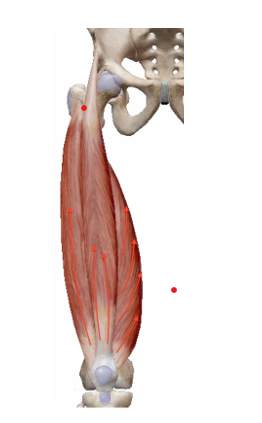Tendon pain can be a stubborn and frustrating experience, especially when rest, stretching, and even injections don’t seem to help. That’s where advanced procedures like TenJet come in. Whether you’re a patient looking for answers or a physical therapy provider working with post-procedural clients, understanding what TenJet is—and how rehab supports healing—is key to […]

If you’ve been diagnosed with a meniscal tear, you might be feeling confused, frustrated, and worried. Although a meniscal tear is a common knee injury, its seriousness can vary based on how severe it is. With an appropriate treatment plan and physical therapy, you can heal and return to your usual activities. This blog will […]

Baseball, often referred to as America’s pastime, captivates fans with its blend of strategy, skill, and athleticism. At the heart of this game is the baseball throw—a seemingly simple action that, upon closer examination, reveals a complex dance of muscles working in perfect harmony. Understanding this intricate choreography not only deepens our appreciation […]

To grasp the concept of isometrics, it’s essential to recognize that there are two primary types: Overcoming Isometrics and Yielding Isometrics. We will focus on Overcoming Isometrics in this blog. Overcoming Isometrics (PIMA) Overcoming isometrics is often referred to as PIMA exercises (pushing isometric muscle action). This type of isometric training involves exerting force with […]
Blood Flow Restriction: How Does It Aid in Your Patients’/Clients’ Recovery, Strengthening, and Healing? Blood flow restriction (BFR) has recently been gaining popularity in outpatient physical therapy although its origins date back to the late 1960s. While the history behind this technique is fascinating, it is not the focus of this discussion. For those curious […]
Arthrogenic Muscle Inhibition (AMI) Persistent weakness in the quadriceps muscles and limited knee extension following knee injuries/surgeries stem from distinct changes in neural excitability; a phenomenon referred to as arthrogenic muscle inhibition (AMI). Comprehension of the pathophysiology underlying AMI is essential to the physical therapist as it serves as a compass for therapeutic interventions. Several […]

As physical therapists, we are aware of the importance of adequate amounts of ankle dorsiflexion. It is essential for proper gait mechanics, negotiating stairs, performing squats and sit to stand transfers, jumping and landing, etc. Evidence has shown that poor ankle mobility can increase risk of injury in athletes and non-athletes, leading to injuries to […]

Bone spurs are small deposits of calcium. If these bony projections become large enough, they can become painful and result in inflammation as well as cause damage the surrounding tendons and muscles. The medical term for bone spurs is “osteophytes”. Osteophytes are commonly seen in the spine, the heel, and the shoulder. In the shoulder, […]
HIP IMPINGEMENT Hip impingement is a painful dysfunction of the hip often cause by biomechanical deficiencies. It can also be known as FAI (femoral acetabular impingement). Hip impingement is a term used to describe when there is hip pain and dysfunction caused by the ball and socket of the hip joint not working properly. This […]
While hamstring strains are common injuries in athletes, you can do things to reduce your risk of suffering from a hamstring injury. What are the hamstrings? The hamstrings are a group of three muscles at the back of the thigh. These muscles help you bend your knee and extend your hip. They are “two-joint” muscles […]